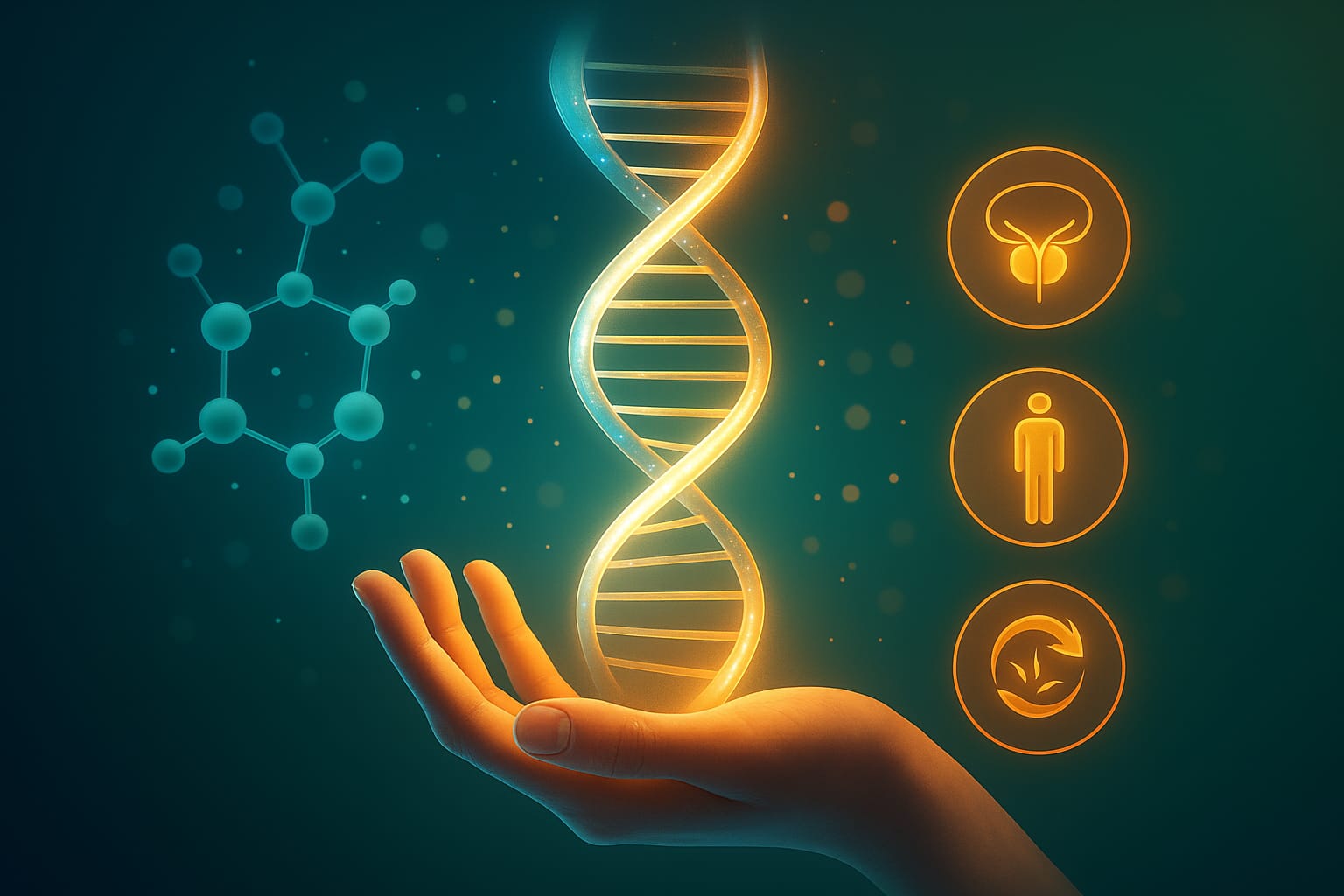Unlock the potential of youth and vitality with Epithalon Peptide. If you’re someone who wants to understand and harness the remarkable benefits of Epithalon Peptide, you’re at the right place.
In this article, we explore its origin and structural insights. Also, we embark on the scientific revelations that have led to its recognition as a potent agent of rejuvenation.
Join us on this insightful journey as we unravel the secrets of Epithalon Peptide – your gateway to a healthier, more vibrant life.
Let’s start with a common understanding of what epithalon is.
Part 1. What is Epithalon Peptide?
Epithalon (Epitalon or Epithalone) is the synthetic version of the polypeptide Epithalamin, naturally produced in the pineal gland. For the eye retina and the pineal gland, a common tetrapeptide Ala-Glu-Asp-Gly (Epitalon) has been designed.
Some properties of epithalon peptide are as follows.
- It increases melatonin production by the pineal gland of rats.
- It can improve immunological parameters in rats and mice.
- Epithalon produces anticarcinogenic effects in different experimental models.
- This peptide can also stimulate antioxidant defenses.
- It can restore reproductive function in old rats.
From these effects, we conclude that Epithalamin increases the lifespan in rats and fruit flies.
Epithalon prolongs the functional integrity of the eye retina in Campbell rats. It also improves visual functions in patients with pigmental retinal degeneration.
Having explored the nature of Epithalon, let’s now shift our focus to its structural intricacies.
Part 2. Epithalon Structure
Epithalon peptide has the molecular formula C14H22N4O9. Some of the properties that its structure contains are mentioned below.
- The molecular weight of epithalon is approximately 390.35 g/mol. It indicates its moderate size in terms of molecular mass.
- With a calculated XLogP3-AA value of -5.5, epithalon demonstrates hydrophilic characteristics.
- Epithalon has 7 hydrogen bond donor sites, which can play a role in its interactions with other molecules.
- The peptide features 10 hydrogen bond acceptor sites, enhancing its interactions with donor molecules.
- Epithalon peptide has 12 rotatable bonds, indicating its flexibility and potential for adopting various conformations.
- The peptide contains 27 heavy atoms, contributing to its molecular complexity and potential for diverse interactions.
- Epithalon carries a formal charge of 0, indicating a neutral overall charge.
- Canonicalization: Epithalon is organized in a standard way so that it can be easily compared and studied.

Now that we understand how Epithalon is made at a tiny level, let’s look at how it can really help improve many different parts of our health.
Part 3. Unraveling Epithalon Peptide’s Benefits
In this section, we will learn about the amazing benefits of Epithalon. These include its effects on our cells aging and how it can help bring back important hormones in rhesus monkeys.
Additionally, its impact on digestive enzymes hints at enhanced digestion. So let’s get started.
1. Telomerase activity and Telomere length in human Somatic cells
Telomerase, a key enzyme, is associated with cellular aging and has potential applications in age-related conditions. The research study delves into the effects of Epithalon peptide on telomerase activity and telomere length in human somatic cells.
- Robust telomerase staining was found in Epithalon-treated fetal fibroblasts and telomerase-positive HeLa cells. Control fetal fibroblasts lacked staining, highlighting Epithalon’s role in inducing telomerase expression.
- PCR confirmed telomerase activity in Epithalon-treated fibroblasts and HeLa cells, contrasting with inactive, intact fetal fibroblasts. Epithalon triggers telomerase activity in somatic cells.
- Epithalon-treated G1 fetal fibroblasts displayed longer telomeres (mean: 240 arb. units) than controls (mean: 180 arb. units). Epithalon peptide promotes telomere elongation.
Epithalon enhances telomerase components, elevating activity by 33.3%.
It prevents critical telomere shortening and facilitates elongation, suggesting a role in aging-related conditions and cancer prevention.
2. Melatonin and Cortisol Production in Old Monkeys
Melatonin is a hormone crucial for regulating sleep-wake cycles, which declines with age. Researchers investigated the impact of Epithalon on melatonin concentration and circadian rhythms in aged rhesus monkeys.
Epithalon offers new insights into age-related hormonal changes and their implications for various bodily functions. The research found the following results.
- Older monkeys exhibited significantly lower melatonin levels than their younger counterparts, particularly in the evening.
- Both young and old monkeys showed higher melatonin concentrations in the evening (21.00) compared to the morning (9.00).
- Epithalon administration to older monkeys significantly raised evening melatonin levels, more than tripling its content compared to controls (p<0.001). Young female monkeys, however, showed no change in melatonin concentration due to Epithalon.
- Epithalon normalized circadian cortisol rhythms in old monkeys, possibly via the pineal-adrenal connection.
It demonstrates Epithalon’s ability to enhance melatonin levels and restore cortisol rhythms in older rhesus monkeys. (Goncharova et al.2001)

3. The Activity of Gastrointestinal Enzymes in Young and Old Rats
In this, we will study the effects of peroral administration of Epithalon on the digestive enzyme activities of rats.
Particularly focusing on young and old rats, the study examines how Epithalon peptide influences various digestive enzymes. The results are as follows.
- Peroral Epithalon administration to 3-month-old male rats led to complex changes in digestive enzyme activities. Maltase and glycyl-L-leucine dipeptidase activity decreased by half in the small intestine.
- In 11-month-old rats, especially females, Epithalon significantly increased maltase and glycyl-L-leucine dipeptidase activities in different parts of the small intestine.
- Epithalon’s impact in aged rats significantly raised the activities of various digestive enzymes. It suggests a potential role in enhancing digestive processes.
- Old rats, especially females, seemed to benefit more from Epithalon administration.
The study suggests that Epithalon plays a role in maintaining digestive homeostasis. It also offers a potential avenue for promoting healthy digestion, particularly in aging individuals.
4. Generation of Reactive Oxygen Species in Drosophila
Scientists investigate the age-related dynamics of reactive oxygen species (ROS) generation in fruit flies. They were studied in different sexes and treated with the peptides Epithalon and Vilon.
The study explores the potential impacts of these peptides on ROS production and mitochondrial function.
- ROS generation in mitochondrial fractions increased during aging in HA+ females. In 25-day-old males and females, ROS generation in the cytosol was higher than in 10-day-old flies.
- Males exhibited 2-fold higher ROS generation in mitochondria compared to females. It is possibly due to differences in enzyme activities in the mitochondrial electron transport chain.
- Males had higher catalase activity, which might be compensatory to cope with increased ROS generation. Sex hormone-related mechanisms, similar to mammalian tissues, might influence these differences.
- Vilon reduced ROS content in mitochondria of 10- and 25-day-old females by 1.7 and 1.5 times, respectively. However, it increased ROS concentration in the cytosol of 25-day-old females by 1.4-fold.
- Epithalon peptide showed no effect on the studied parameters, suggesting that its geroprotective effects might differ from Vilon.
- Vilon’s impact on mitochondrial function could be relevant to diseases such as Parkinson’s disease and Huntington’s chorea.
This research delves into ROS generation and mitochondrial function in fruit flies, revealing sex-related differences and peptide effects.
 After discussing epithalon benefits, let’s now transit to a trusted destination to buy epithalon peptide – “NuScience Peptide,” your partner in wellness.
After discussing epithalon benefits, let’s now transit to a trusted destination to buy epithalon peptide – “NuScience Peptide,” your partner in wellness.
Part 4. Where to Buy Epithalon Peptide: Trusted Sources
When it comes to your health and well-being, quality matters. That’s why “NuScience Peptides” stands as your trusted partner in providing top-tier Epithalon Peptide products. Here’s why you should choose NuScience Peptides for your wellness needs:
1. Same Day Shipping
Enjoy the convenience of receiving your order swiftly. They offer same-day shipping on all orders of in-stock items placed before 12:00 pm EST.
2. Dedicated Service
Their dedicated team is always at your service. Ready to assist you with any customer service requests you may have. They prioritize your satisfaction and aim to provide a seamless experience.
3. Free Shipping
To enhance your shopping experience, they offer free shipping on all orders totaling $200 or more. Rest assured, they’ve got you covered!
4. Purist Quality
They take pride in ensuring the utmost purity of our products. Every item they offer undergoes rigorous lab testing and is certified for the highest possible purity.
Choose “NuScience Peptides” for your Epithalon Peptide needs. Experience the difference that quality, expertise, and personalized care can make on your path to enhanced wellness.
 Epithalon Peptide From NuScience Peptides
Epithalon Peptide From NuScience Peptides
Conclusion
Elevate your well-being with Epithalon Peptide’s transformative benefits. Uncover its potential to enhance vitality, from influencing cellular aging to revitalizing hormones.
For trusted sourcing, choose “NuScience Peptides” Embark on a journey to a healthier, vibrant life with Epithalon Peptide.
DISCLAIMER
This product is intended for LABORATORY RESEARCH USE ONLY. It is not intended for human consumption or any other purposes.
Any use of this product for purposes other than laboratory research is strictly prohibited. The information provided in this article is for informational and educational purposes only and should not be taken as medical advice. Always try to consult with a qualified healthcare professional before using any research materials or supplements.
REFERENCES
Goncharova, N. D., Khavinson, B. Kh., & Lapin, B. A. (2001). Regulatory effect of epithalon on production of melatonin and cortisol in old monkeys. Bulletin of Experimental Biology and Medicine, 131(4), 394–396. https://doi.org/10.1023/A:1017928925177
Kh Khavinson, V. (2002). Peptides and Ageing. Neuro Endocrinol Lett ., PMID: 12374906(23).(Google Scholar)
Khavinson, V. Kh., Bondarev, I. E., & Butyugov, A. A. (2003). Epithalon peptide induces telomerase activity and telomere elongation in human somatic cells. Bulletin of Experimental Biology and Medicine, 135(6), 590–592. https://doi.org/10.1023/A:1025493705728
Khavinson, V. Kh., Malinin, V. V., Timofeeva, N. M., Egorova, V. V., & Nikitina, A. A. (2002). Effects of epithalon on activities gastrointestinal enzymes in young and old rats. Bulletin of Experimental Biology and Medicine, 133(3), 290–292. https://doi.org/10.1023/A:1015807305791
Khavinson, V. Kh., Myl’nikov, S. V., Oparina, T. I., & Arutyunyan, A. V. (2001). Effects of peptides on generation of reactive oxygen species in subcellular fractions of drosophila melanogaster. Bulletin of Experimental Biology and Medicine, 132(1), 682–685. https://doi.org/10.1023/A:1012588530643
PubChem. (2021, May 7). Epitalon. PubChem. https://pubchem.ncbi.nlm.nih.gov/compound/219042


